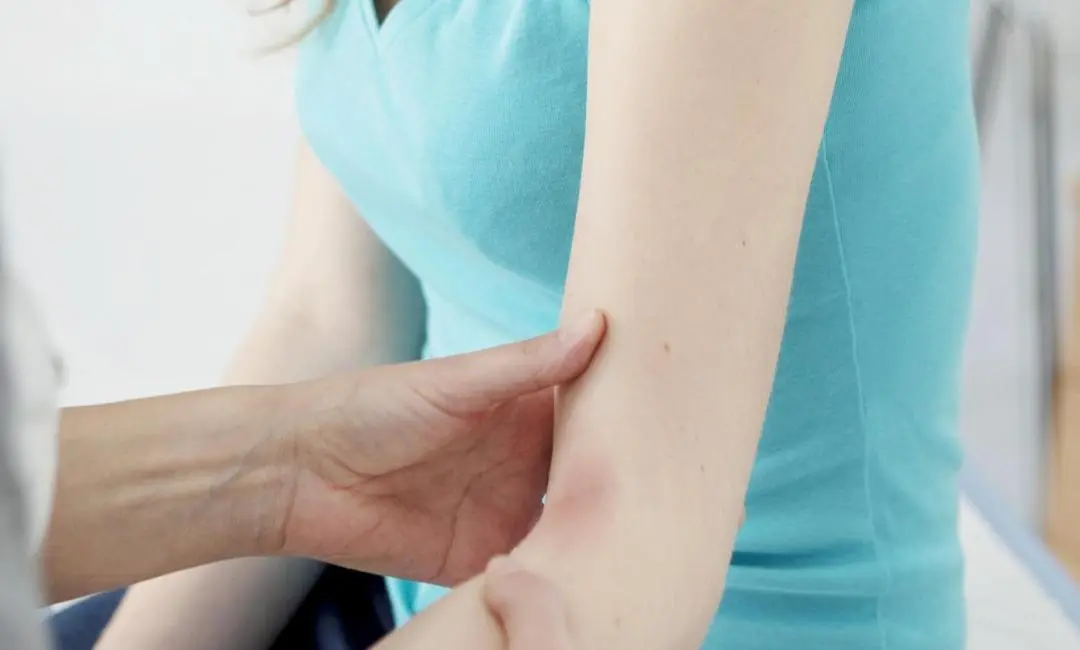Inverse psoriasis, or wrinkle psoriasis, is a specific form of psoriasis affecting the body’s wrinkles. It does not present in the same way as plaque psoriasis.
Definition: What is inverse psoriasis or psoriasis of the folds?
Inverse psoriasis, also called fold psoriasis, is a specific form of psoriasis. In its classic presentation, this chronic autoimmune inflammatory disease usually affects the skin on the scalp, eyebrows, elbows, knees, torso, and back. As its name suggests, inverse psoriasis is distinguished by its specific locations. It is located in the intergluteal, axillary, submammary, umbilical, and inguinal folds, areas where two skin surfaces rub against each other.
The ear canal (retro-auricular fold) is also often affected. Inverse psoriasis represents 3 to 7% of the different forms of psoriasis. This skin condition can significantly impact daily life.
What causes inverse psoriasis? What makes it worse?
The causes of psoriasis, whatever its form, remain mysterious. In addition to a genetic predisposition, several risk factors are suspected: diabetes, obesity, high blood pressure, and stress. Being overweight also aggravates inverse psoriasis, given the friction caused by excess skin and fat in the folds. On the other hand, the mechanism that causes it is well known.
The development of psoriasis results from an accelerated renewal of epidermal cells. For unknown reasons, immune cells are found in the skin and produce inflammatory cells. As a result, skin cells are renewed in three days instead of a month normally. These accumulate on the skin’s surface, increasing the thickness of its outer layer and forming the plaques characteristic of psoriasis.
Does stress cause psoriasis?
Just like scratching and sweating, stress triggers or even aggravates psoriasis flare-ups. Conversely, when anxiety regresses, psoriasis improves. Similarly, exposure to the sun often improves the pathology.
What are the symptoms of inverse psoriasis?
Armpits, intergluteal, navel, under the breasts. Different locations of plaque psoriasis.
Unlike plaque psoriasis, which is characterized by the appearance of red inflammatory plaques topped with whitish deposits (scales), inverse psoriasis does not cause flaking because it is eliminated by perspiration. The red plaques are well-defined and located on the fold areas (groin, armpits, navel, external auditory canals, under the chest, folds of the stomach or between the buttocks). The itching is often significant, as is the pain because the skin is raw.
Diagnosis of inverse psoriasis
The diagnosis is based on clinical examination. A skin biopsy may be performed in case of doubt or confusion with mycosis. Indeed, the diagnosis can be challenging because psoriasis lesions are found on the folds, the preferred place for fungi to develop.
How to treat and cure inverse psoriasis with cream?
The treatment of inverse psoriasis depends mainly on its location. If it is not very extensive, it consists of applying low—to moderate-class dermo corticoids to the affected areas. The disadvantage of the latter is that they cannot be applied for too long, given the risk of skin atrophy.
If the lesions are present on a large part of the body, phototherapy based on UVA and UVB ultraviolet rays can be proposed. The duration of the sessions depends on the type of psoriasis and the patient’s phototype. On the other hand, this method is complicated or even impossible in certain areas, particularly the intergluteal fold. In this context, phototherapy aims to slow cell renewal and reduce inflammation.
Finally, systemic treatment is often necessary to prevent or limit the risk of developing psoriatic arthritis. These are active substances administered orally or as a subcutaneous injection to act on the entire immune system. However, psoriasis remains a chronic disease; it is impossible to achieve a definitive cure. Treatments improve symptoms, not eliminate them.


